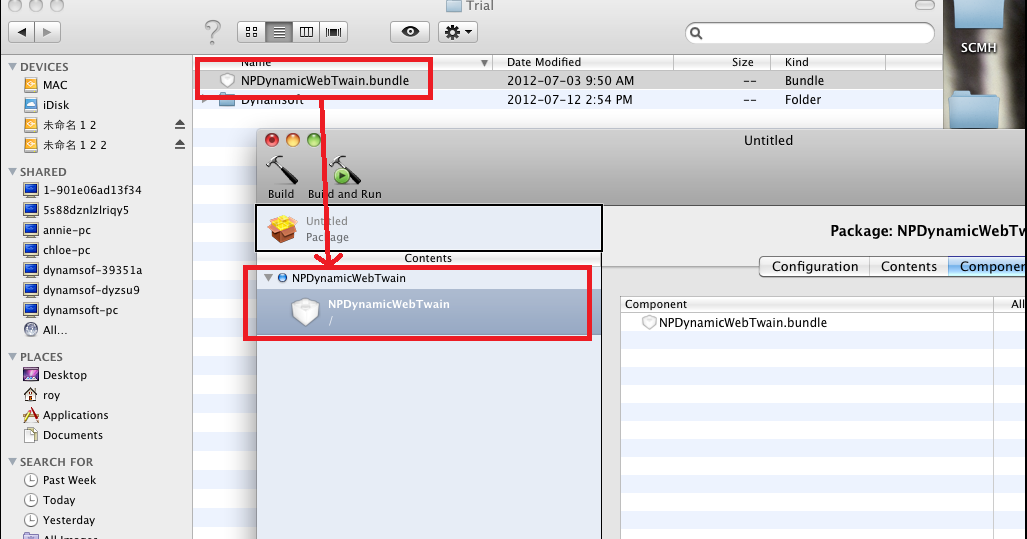Pkg Installer For Mac Os X El Capitan
You can deploy your java application on the Mac OS X. All the Java products can be embedded in a package to be deployed on the Mac OS X. This package will be a ZIP archive that contains for every Java Product a folder with a special structure. This folder is known as a bundle. The bundle groups related resources together in one place.
When I tried to install MyApplication.pkg in silent mode, the process exited with exit code 1 and with output - 'installer: must be run as root to install this package.' I checked for variable installerisrootinstaller and found that its value is false. How to make pkg Installer on Mac OS X Xiao Ling / May 5, 2014 October 29, 2019 / Mac / Mac, PackageManager, pkg installer 2 comments When you visit the Dynamic Web TWAIN online demo from Mac OS X, you need to download and install a pkg plugin. A file extension format like PKG Mac OS X Installer Package is a standard way that information is encoded for storage in a computer file. The file extension PKG Mac OS X Installer Package format specifies how bits are used to encode information in a digital storage medium. The Missing Package Manager for macOS (or Linux). It's all Git and Ruby underneath, so hack away with the knowledge that you can easily revert your modifications and merge upstream updates.
Of course, not all the features that are available for a Windows application are available for the Mac OS X. For the Java products deployed on the Mac OS X the following settings are supported at this time:
- Single or multiple Java products in one package
- File associations
- Java settings. Most of the settings you can specify for the Java products are supported. There are some exceptions: splash screen, JVM type and Library path are not supported.
Other settings that are available for an MSI package and are Windows Installer related, like custom actions, registry entries, environment variables etc. are not supported.
There are some Mac OS X specific settings like: Description, Minimum OS, Icon, Signature, Bundle ID and you can even specify custom properties or any other predefined application property.
Follow our video tutorial to see a basic working example:
You can enable the creation of a Mac OS package by adding a Mac OS X Build in Builds page.
| Operating system | macOS |
|---|---|
| Type | Installer |
| Website | www.apple.com |
Installer is an application included in macOS (and in its progenitors OPENSTEP and NeXTSTEP) that extracts and installs files out of .pkg packages. It was created by NeXT, and is now maintained by Apple Inc. Its purpose is to help software developers create uniform software installers.
Installer launches when a package or metapackage file is opened. The installation process itself can vary substantially, as Installer allows developers to customize the information the user is presented with. For example, it can be made to display a custom welcome message, software license and readme. Installer also handles authentication, checks that packages are valid before installing them, and allows developers to run custom scripts at several points during the installation process.[1]
Installer package[edit]
Installer packages have the file extension .pkg. Prior to Mac OS X Leopard, installer packages were implemented as Mac OS X packages.[2] These packages were a collection of files that resided in folders with a .pkg file extension.[3][4] In Mac OS X Leopard the software packaging method was changed to use the XAR (eXtensible ARchiver) file format; the directory tree containing the files is packaged as an xar archive file with a .pkg extension.[5] Instead of distributing multiple files for a package, this allowed all of the software files to be contained in a single file for easier distribution with the benefit of package signing.

See also[edit]
References[edit]
- ^'Software Delivery Guide - Specifying Install Operations'. Apple. Retrieved October 11, 2016.
- ^'Software Delivery Guide'. Apple. Retrieved March 15, 2015.
- ^'The Flat Package'. MacTech. Retrieved March 15, 2015.
- ^'OSX legacy packaging redux'. Matthew Brett. Retrieved March 15, 2015.
- ^'XAR NEW MacOS X 10.5 package format'. MacGeekBlog. Retrieved March 15, 2015.
Mac Pkg Install

